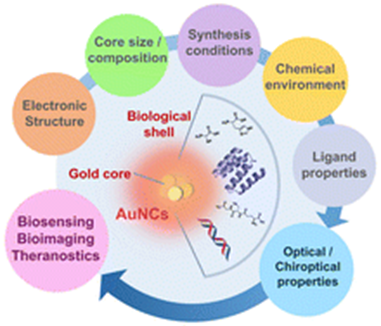Biomolecule-stabilized gold nanoclusters (AuNCs) have become functional nanomaterials of interest because of their unique optical properties, together with excellent biocompatibility and stability under biological conditions. In this review, we explore the recent advancements in the application of biomolecular ligands for synthesizing AuNCs. Various synthesis approaches that are employing amino acids, peptides, proteins, and DNA as biomolecular scaffolds are reviewed. Furthermore, the influence of the synthesis conditions and nature of the biomolecule on the emerging optical (absorption and photoluminescence) and chiroptical properties of AuNCs is discussed. Finally, the latest research on the applications of biomolecule-stabilized AuNCs for biosensing, bioimaging, and theranostics is presented.

